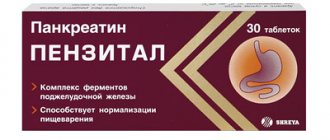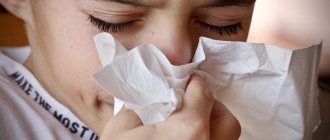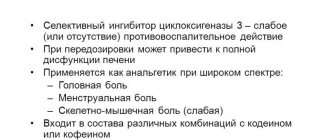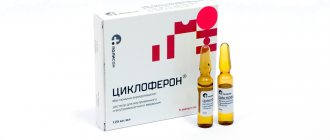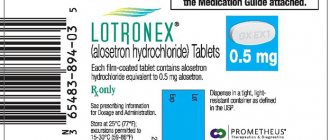MINISTRY OF HEALTH OF THE RUSSIAN FEDERATION
PHARMACOPOEIAL ARTICLE
Water for injection FS.2.2.0019.15
Water for injections Instead of GF X, Art. 74;
Aqua per injectionis in replacement of FS 42-2620-97
H2O M. m. 18.02
This pharmacopoeial monograph applies to bulk water for injection obtained from drinking water by distillation, ion exchange, reverse osmosis, a combination of these methods or other methods, or from water purified by distillation, and intended for the production or manufacture of parenteral and other medicines.
When using water for injection in the technology of parenteral and other drugs obtained immediately before use, under conditions that preclude subsequent sterilization of drugs, water for injection must be sterile.
Water for injections must be pyrogen-free and must not contain antimicrobial preservatives or other additives.
Electrical conductivity
The determination is carried out in accordance with the General Pharmacopoeia Monograph “Electrical Conductivity” using equipment - conductometers included in the State Register of Measuring Instruments.
Equipment
Conductivity cell:
— electrodes made of a suitable material, such as stainless steel;
— The cell constant is usually set by the supplier and subsequently verified at appropriate intervals using a certified standard solution with a conductivity of less than 1500 µS/cm or by comparison with a cell having a certified cell constant. The cell constant is considered confirmed if the value found is within 2% of the value specified in the certificate; otherwise, recalibration must be performed.
Conductivity meter. The measurement accuracy must be at least 0.1 µS/cm in the lowest range.
Calibration of the system (conductivity cell and conductivity meter). Calibration must be carried out using one or more appropriate standard solutions (OFS “Electrical Conductivity”). The permissible deviation should be no more than 3% of the measured electrical conductivity value.
Conductivity meter calibration. The conductivity meter is calibrated using high precision resistors or an equivalent device after disconnecting the conductivity cell for all intervals used to measure conductivity and calibrate the cell, with an error of no more than 0.1% of the certified value.
If it is not possible to disconnect a conductivity cell installed in the production line, calibration can be performed relative to a pre-calibrated conductivity cell placed in a stream of water next to the cell being calibrated.
Methodology
Stage 1
Measure electrical conductivity without temperature compensation while simultaneously recording temperature. Conductivity measurements using temperature-compensated conductometers are only possible after appropriate validation.
Find the nearest temperature value (Table 1), less than the measured one. The corresponding value of electrical conductivity is the maximum permissible.
Water for injection meets the requirements if the measured electrical conductivity value does not exceed that found from the table. 1 maximum permissible value.
Table 1 - Maximum permissible values of electrical conductivity of water for injection depending on temperature
| Temperature, ºС | Electrical conductivity, µS/cm | Temperature, ºС | Electrical conductivity, µS/cm |
| 0 | 0,6 | 55 | 2,1 |
| 5 | 0,8 | 60 | 2,2 |
| 10 | 0,9 | 65 | 2,4 |
| 15 | 1,0 | 70 | 2,5 |
| 20 | 1,1 | 75 | 2,7 |
| 25 | 1,3 | 80 | 2,7 |
| 30 | 1,4 | 85 | 2,7 |
| 35 | 1,5 | 90 | 2,7 |
| 40 | 1,7 | 95 | 2,9 |
| 45 | 1,8 | 100 | 3,1 |
| 50 | 1,9 |
For temperature values not presented in table. 1, calculate the maximum permissible value of electrical conductivity by interpolating the closest upper and lower values given in table. 1.
If the electrical conductivity value exceeds that given in the table. 1 value, continue testing in accordance with the requirements of stage 2.
Stage 2
At least 100 ml of water for injection is placed in a vessel and mixed. With constant stirring, set the temperature within 25 ± 1 ºС and measure the electrical conductivity every 5 minutes until the change in electrical conductivity over 5 minutes is less than 0.1 µS/cm. This electrical conductivity value is recorded.
Water for injection meets the requirements if the obtained electrical conductivity value is no more than 2.1 µS/cm.
If the conductivity value is more than 2.1 µS/cm, test in accordance with the requirements of stage 3.
Stage 3
The test is carried out for approximately 5 minutes after the stage 2 test, maintaining the temperature within 25 ± 1 ºC. Add a freshly prepared saturated solution of potassium chloride to water for injection (0.3 ml per 100 ml of water for injection) and determine the pH to the nearest 0.1.
Determine the limiting value of electrical conductivity (Table 2) for a given pH.
Water for injection meets the requirements for electrical conductivity if the electrical conductivity value obtained at stage 2 does not exceed the value given in table. 2. If the electrical conductivity value obtained at stage 2 exceeds the value given in table. 2, or the pH value is outside the range of 5.0–7.0, then water for injection does not meet the requirements for the “Electrical conductivity” indicator.
Table 2 - Maximum permissible values of electrical conductivity of water for injection depending on pH
| pH | Electrical conductivity, µS/cm | pH | Electrical conductivity, µS/cm |
| 5,0 | 4,7 | 6,1 | 2,4 |
| 5,1 | 4,1 | 6,2 | 2,5 |
| 5,2 | 3,6 | 6,3 | 2,4 |
| 5,3 | 3,3 | 6,4 | 2,3 |
| 5,4 | 3,0 | 6,5 | 2,2 |
| 5,5 | 2,8 | 6,6 | 2,1 |
| 5,6 | 2,6 | 6,7 | 2,6 |
| 5,7 | 2,5 | 6,8 | 3,1 |
| 5,8 | 2,4 | 6,9 | 3,8 |
| 5,9 | 2,4 | 7,0 | 4,6 |
| 6,0 | 2,4 |
Disadvantages of use
Almost everyone associates injections with unpleasant sensations. Even the slightest damage to the skin can cause pain. This is why many refuse to be treated with injections. This method is best done only in a hospital. This is a natural requirement that must be observed in order to prevent negative consequences such as hepatitis and HIV.
The introduction of some medicinal solutions can provoke pain, burning and discomfort. If you do not follow the rules and features of administering the form, you may become very dizzy, your blood pressure may drop, and in the worst case, it may lead to fainting. If there are no medical personnel and necessary equipment nearby, medical assistance will not be provided in a timely manner.
Aluminum
No more than 0.000001% (OFS “Aluminium”, method 1).
Test solution. To 400 ml of purified water add 10 ml of acetate buffer solution, pH 6.0 and 100 ml of distilled water, mix.
Standard solution. To 2 ml of a standard solution of aluminum ion (2 μg/ml), add 10 ml of acetate buffer solution, pH 6.0 and 98 ml of distilled water, mix.
Control solution. To 10 ml of acetate buffer solution, pH 6.0, add 100 ml of distilled water and mix.
Injection solutions in polyethylene ampoules (PolyTwist)
| Name | Quantity, pcs. in pack | Price including VAT per pack. | State price register for pack | Manufacturer |
| Water for injection, solution for injection - 2.0 ml | 10 | 93,87 | 92,24 | Grotex, Russia |
| Water for injection, solution for injection - 5.0 ml | 39,00 | 97,34 | ||
| Water for injection, solution for injection - 10.0 ml | on request | 119,00 | ||
| Glucose, solution for injection 40% - 10.0 ml | 47,98 | 95,85 | ||
| Potassium chloride, solution for injection 4% -10.0 ml | 30,00 | 97,20 | ||
| Lidocaine, solution for injection 2% - 2.0 ml | 98,90 | 92,78 | ||
| Magnesium Sulfate, solution for injection 25% - 5.0 ml | 29,57 | 22,42 | ||
| Novocaine, solution for injection 0.5% - 5.0 ml | 23,58 | 74,00 | ||
| Novocaine, solution for injection 0.5% - 10.0 ml | 28,75 | 148,00 | ||
| Sodium chloride, solution for injection 0.9% - 5.0 ml | 30,40 | 101,54 | ||
| Sodium chloride, solution for injection 0.9% - 10.0 ml | 31,15 | 105,71 | ||
| Piracetam, solution for injection 20% - 5.0 ml | 52,70 | 68,95 |
Also purchased with this product:
- Dental materials, instruments and equipment
- Alcohol wipes
- Automatic syringe
- Disposable medical syringes (2-component syringes)
- Three-component disposable syringes
- Injection adhesive plaster
- Plaster bandage
- Self-fixing bandage
- Tripod (stand) for dropper and solutions
- Articaine DF
- ARTICAINE INYBSA
- Articaine, Articaine with adrenaline, Articaine with adrenaline forte
Heavy metals
No more than 0.00001%.
The determination is carried out using one of the given methods.
Method 1. Place 10 ml of test water for injection into a test tube with a diameter of about 1.5 cm, add 1 ml of acetic acid diluted 30%, 2 drops of 2% sodium sulfide solution and mix. After 1 minute, observe the color of the solution along the axis of the test tube placed on a white surface. There should be no staining.
Method 2. 120 ml of water for injection is evaporated to a volume of 20 ml. The remaining water after evaporation in a volume of 10 ml must withstand the test for heavy metals (OPS “Heavy Metals”) using a standard solution containing 1 ml of a standard solution of lead ion (5 μg/ml) and 9 ml of test water for injection.
Note. Lead ion standard solution (5 µg/ml) is prepared by diluting lead ion standard solution (100 µg/ml) with test water for injection.
Concept and benefits of choice
Dosage forms for injections - solutions in the form of liquid or powder, tablets, suspensions that must be dissolved in advance. Injected under the skin with a syringe. If there is a lot of solution, then it is administered by infusion.
The advantages of using such forms include:
- Quick effect (the result can be observed immediately as soon as the solution gets under the skin);
- They do not affect the functioning of the stomach or liver in any way, and can be used with other medications;
- Can be administered to a person if he is unconscious;
- The medicine has no distinct smell or taste.
Microbiological purity
The total number of aerobic microorganisms (bacteria and fungi) is no more than 10 CFU per 100 ml. The presence of Escherichia coli, Staphylococcus aureus, Pseudomonas aeruginosa in 100 ml is not allowed.
To analyze the microbiological purity of water for injection, a sample in a volume of at least 1000 ml is taken.
The study is carried out by membrane filtration under aseptic conditions in accordance with the methods of the General Pharmacopoeia Monograph “Microbiological purity”, clause 12.
What are injection materials made from?
The liquid must be used so that the powder dosage form is completely dissolved. In every pharmacy you can buy this solution at a low cost. At the time of use, you need to take the solution and pour it into a container with the drug, dilute well until the lumps are completely dissolved.
As a rule, when prescribing a prescription, the doctor indicates which solvent will need to be purchased. Non-aqueous solvents include oil solvents, such as coconut, olive, and peach. Since the oil is viscous, pain is felt during injection, and there is a possibility of granulomas appearing. To reduce the viscosity, it is worth using ethyl ether.
If the doctor prescribed vitamin B in ampoules, then ethyl oleate will pass as a solution. Compared to oil-based ones, it dilutes the drug perfectly and dissolves much faster. If vitamins A and D are prescribed, it is better to use propylene glycol.
GOODS
Water analysis, price Water analysis from a well, a well or a water supply system should be done in a laboratory in St. Petersburg and the Leningrad region, the cost of testing drinking water, where to do it, price...
Find out more
UVI-0.15 installations for producing water for injection and purified water according to FS Installations UVI-0.15 for producing water for injection according to FS.2.2.0019.15 and purified water according to FS.2.2.0020.15 - GF 13th edition...
Find out more
ATTENTION! In connection with the introduction of new pharmaceutical regulations in 2016, our company, together with our company, has developed an additional purification stage for the UVI-0.15 installation, which allows us to obtain water for injection according to new requirements for the electrical conductivity of water.
According to the requirements of the new GF 13, water for injection according to FS.2.2.0019.15 “Aqua per injectionis” must have an electrical conductivity at 25°C of no more than 1.3 µS/cm, and purified water according to FS.2.2.0020.15 “Aqua purificata” - no more than 5 .1 µS/cm.


